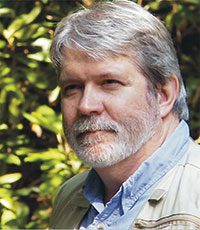Noticed the recent media storm of ads and commercials for electric cars and trucks? As the result of this massive marketing blitz, the current, record-high cost of fuel and the rising pressure to go greener, more people than ever are at least thinking about hybrid and electric vehicles. But what about all those floating vehicles we love to use in the great outdoors? They’re being transformed, too. One day you could be zipping down your favorite lake, river or coastline to the sound of little more than wind and wake or your favorite 80s hair rock.
I know—a lot of you are thinking, “Yeah, right! They’ll have to pry my four-stroke from my cold, dead hands.” Well, don’t fret too much. There likely will be a market for gasoline outboards for a long time to come—unless, of course, gas gets so expensive it comes down to the choice of filling up the ‘ol Ranger or filling up the ‘ol Ranger.
So, what is the real-world 411 on electric outboards? First of all, electric outboards are not trolling motors. An electric outboard is designed and built to provide the primary drive power for a full-size fishing or sport craft. And some of them now come with plenty of said power for the job—something for which no trolling motor ever had the muscle.
For example, Torqeedo, an e-motor builder that for the past decade or so has made a name for itself in the low-power arena, now offers the equivalent of an 80 HP model that will more than hold its own against comparable gas models. Another interesting new beast, from a company called Vision Marine Technologies, is the E-Motion 180E outboard, which boasts 180 zero-pollution, zero-emission, near-zero-noise horses. But be warned, at present these and other full-size electrics come in at about the same price as a whole top tier bass boat and trailer rig, with the gas engine.
As for performance and cost aspects of the new e-motors, here are a few very general comparisons to their ICE counterparts:
POWER–
A cursory online scan of currently available e-motors gives the impression there are now a fair number of models rated comparably in power to many common ICE models (under 200 HP), but there’s a little more to consider here. First, e-motors are technically rated in watts or kW, 1 kW being about equal to 1.3 HP, and ratings can seem confusing from company to company. It will pay to drill down in your comparison research when considering an e-motor vs. a gas model. Also, battery types and costs are much more relevant with e-motors. Just as with ICEs, your relative need for speed will directly determine your power consumption. With either type motor, you can go easy on the throttle and get up to a full day on the water or run ‘er full tilt and you’ll be headed back to shore in an hour or two. Hence, a major limiting factor for high-powered e-motors is the difficulty of conveniently and quickly recharging. ICEs still win big in that game.
ENVIRONMENTAL IMPACT–
Operation of e-motors produces no air, water or significant noise pollution, winning hands down over ICEs in this category. The carbon released in producing each kWh of electricity for the battery of an e-motor is a fraction of the C02 produced from a gallon of gasoline in the tank of an IC outboard. And older two-stroke ICEs are notorious for the amount of gas and oil pollutants they release. Because of their inefficient carburetors, those old units pump up to 30% of their unused gas/oil mix straight out of the engine into the water. One EPA study showed that older outboards that don’t meet 2006 emission standards produce roughly the same pollution level per hour as 500 cars operated at about the same speed! And according to the American Boating Association, certain personal watercraft models can emit the same amount of pollution in seven hours as a new passenger car will produce when driven 100,000 miles. Whoa!
The takeaway? E-motors, with comparable HP ratings to those of current, full-size ICEs cost a whole lot to purchase, yet next to nothing to operate. They win easily over ICEs in an environmental impact comparison and make very little noise, but recharging during an outing is still a challenge. There are clearly some strong factors and trends driving us toward a greener boating future, but with the current limitations of e-motors and all the many power and pricing options still available for IC outboards, it looks like the big, green-power wave is still out there, somewhere over the horizon.
David Arthur Ramsey is an outdoor photographer, writer and conservationist, born and raised in the mountains of northeastern Tennessee. His outdoor writing and photography have been published locally, regionally and nationally and are most often associated with work to preserve and protect threatened lands and waters throughout the Southern Appalachian Mountains.
